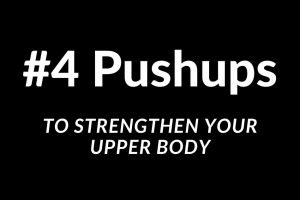Know What Is a Stiff Legged Deadlift, Which Looks Like Conventional Deadlift but Differs in Some Ways
Have you been hitting the gym for a year or something? You’re a beginner, and you’ve got your hands in most of the exercise, and you’ve started feeling confident about workouts, and hitting the gym has become a part of your life. Then there’s a huge chance you may have come across many exercises such as deadlift. And you may have even come across a name like stiff legged deadlift. Nonetheless, if you’re wondering what is a stiff legged deadlift then don’t worry. You aren’t the only one. Many get confused when they hear the name stiffed leg deadlift, and many even confuse it with the conventional one.
Here in this article, we’ll discuss about stiff legged deadlifts in detail. So you can know what makes it different from the conventional deadlift and what benefits it offers.

What Is a Stiff Legged Deadlift?
Put simply, stiff legged deadlift (SLDL) is one of the strength training exercises that work on your posterior chain muscles. The posterior chain includes muscles such as the glutes, calves, hamstring, and lats. In addition, this stiff legged deadlift is also called a straight-leg deadlift.
Stiff legged deadlifts are different from conventional deadlifts. For instance, in stiffed leg deadlifts, the legs are completely straight, whereas you bend your legs in the conventional deadlift, especially in the starting position.
Similarly, the stiff legged deadlift is best suited for people looking to strengthen their hamstrings and those who have back pain, as it puts less pressure on your lower back. Also, it’s recommended that you start with around 40% of the weight you use for barbell back squats or 70% if you want to go heavy and keep 3 to 8 reps.
Let’s get into more details and also understand how it differs from other types of deadlifts, like conventional deadlifts.
Stiff Legged Deadlift vs. Conventional Deadlift – Know the Difference
Here below is the side-by-side three major difference between stiff legged deadlift and conventional deadlift, which will give you an idea of how both differ from each other:
| Stiff Legged Deadlift | Conventional Deadlift | |
| Starting Position | The stiff legged deadlift starts with a standing position, with weight at your waist level. Further, you lower the weight to the ground. | In a conventional deadlift, the lifter picks the barbell from the ground, and that’s the starting position. |
| Leg Posture | For stiff legged deadlift, you are required to keep your legs straight during exercise. Similarly, this posture puts more emphasis on your lower back and leg muscles. And it also gives mild stretch. | For a conventional deadlift, you bend your knees, and your shins should be touching the bar. |
| Range of Motion | The stiff legged deadlift has a shorter range of motion. Similarly, it also depends upon what weights you choose—for example, dumbbell, barbell, or kettlebell. | In conventional deadlifts, your range of motion is more extended compared to a stiff legged deadlift. |
Here’s How to Do Stiff Legged Deadlift
We hope now you know what is a stiff legged deadlift and what are the major differences between stiff legged deadlift and a conventional deadlift.
Now, let’s understand how to perform it.
For doing a stiff legged deadlift, take a barbell along with a weight that you can control for 8 to 12 reps of 2 to 3 sets. Make sure you’re choosing the weight that lets you maintain proper form throughout all repetitions and sets.
Follow the below steps:
Set-Up
- Stand with the feet hip-width apart and the barbell in front of you.
- Make sure the barbell is positioned over the middle of your feet.
Barbell Grip
- Bend at your hips & knees to lower your body while keeping your back straight.
- Go down and grab the barbell using an overhand grip (palms facing towards you). Also, keep the grip slightly wider than the shoulder width apart.
Body Position
- Keep chest up, shoulders back, and natural arch in lower back.
- Engage your core muscles to stabilize the spine.
Lifting Bar
- Straighten your hips & knees to lift the barbell from the ground.
- As you start lifting the barbell, make sure you’re keeping your knees slightly bent. Also, avoid locking them at the top.
Lower The Barbell
- Push your hips back while maintaining a straight back, and then lower the barbell.
- Keep the barbell close to your body in the entire movement as you do in a conventional deadlift.
Stretch & Contract
- Keep lowering the barbell till you feel your hamstrings are stretched.
- Pause briefly at the bottom of the movement and then contract your hamstrings and glutes to go back to the starting position.
Repeat
- Repeat the reps till you complete the set. Wait for around 1 minute and start with the second set and so on.
10 Benefits of Adding Stiff Legged Deadlift Into Your Workout Routine
The stiff legged deadlift provides various benefits to those looking to target specific muscle groups & improve their overall strength. Here below are some key benefits you’ll get if you start incorporating stiff legged deadlift into your workout routine:
1) Development of Hamstrings
It’s a highly effective exercise to target your hamstrings. The movement of a stiff legged deadlift involves extensions, which put a significant load on the hamstrings, which helps develop and strengthen those muscle groups.
2) Strengthens Lower Back
It engages your erector spine muscles of the lower back for maintaining an upright posture at the time of performing stiff legged deadlift. Hence, it contributes to strengthening and stabilizing your lower back.
3) Activates Glutes
Stiff legged deadlift involves your hip extension, and due to that, it activates your glutes. Similarly, it also contributes to glute development and strengthening of your overall lower body part.
4) Improved Hip Mobility
The hip hinge movement of stiff legged deadlift needs a good range of motion in your hips. Hence, regularly performing this exercise can result in improved mobility and flexibility of your hips.
5) Core Strengthening
To maintain proper form at the time of doing stiff legged deadlift, you need to engage your core muscle group. Hence, it helps in stabilizing your spine and contributes to overall strengthening of your core muscles.
6) Posterior Chain Strengthening
The stiff legged deadlift targets your entire posterior chain along with hamstrings, lower back, and glutes. Hence, it may strengthen these muscles, which further enhances your athletic performance and reduces the chances of injury.
7) Functional Strength
Exercise itself mimics daily activity such as bending of hips, which makes it a functional exercise. So, it can improve your daily life performance.
8) Muscle Tension & Time Under Tension
The stiff legged deadlift focuses on muscle tension and time under tension, which is essential for muscle growth and development of strength.
9) Less Stress Over Spine
Compared to conventional deadlift, stiff legged deadlift has less stress over your spine, as the weights are closer to your body. Hence, if done correctly, it can benefit those who have lower back issues.
10) Versatility
It’s a versatile exercise that you can do using various types of equipment like barbells, kettlebells, or dumbbells, according to the flexibility of your workout routine.
What Is a Stiff Legged Deadlift Common Mistakes to Avoid?
Here below are three commonly seen mistakes made by people at the time of performing stiff legged deadlifts that must be avoided:
1) Rounding the Back
It’s the most common mistake made at the time of stiff legged deadlift. You must stabilize your body before lifting weights. For instance, before you bend over at the waist, keep your shoulder blades together to keep your back straight and tighten your core to keep your abs engaged.
2) Moving Away Weights From the Body
Many times, lifters don’t focus on proper form and allow the weight to move away from the body when executing a stiff legged deadlift. Hence, it brings weight onto your toes and adds stress onto your back that could be avoided.
3) Rushing the Motion
Often, lifters rush through the stiff legged deadlift at the time of lowering weights. Bending too quickly can risk injury and also prevent from maximum gains. Instead, when lowering weights, one should focus on the deep stretch of the hamstrings and not rush to complete the repetition because it can hamper lower body development.
What Is a Stiff Legged Deadlift Variation Someone Can Try?
Here are some of the variations of stiff legged deadlift exercises you can give a try instead of using a barbell:
- Kettlebell stiff legged deadlift
- Banded stiff legged deadlift
- Alternate bodyweight stiff legged deadlift
What Is a Stiff Legged Deadlift Alternative Exercise Someone Can Try?
Those who want to try alternatives to stiff legged deadlifts can do these exercises:
- Romanian deadlift
- Glute ham raise
- Bulgarian split squats
Muscles Used in Stiff Legged Deadlift
Below are the muscles used whenever someone does the stiff legged deadlift.
Primary Muscle Group
- Lower Back
- Hamstrings
- Glutes
Secondary Muscle Group
- Core muscles (Obliques & Abdominals)
- Forearms
- Trapezius
- Middle Back
What Is a Stiff Legged Deadlift Exercise Good for?
It’s one of the best exercises for hip flexion and extension. It helps to increase the range of motion and improve overall strength. Similarly, it’s the best exercise for toning your hamstrings, glutes, and lower back muscles.
3 Pro Tips to Boost Your Performance During Stiff Legged Deadlift Exercise
- Start with lighter weights and master the technique before you start increasing the load of weights.
- Focus on your hinge movement and engage the hamstrings while avoiding excessive bending at the knees.
- Keep your barbell close to the body to minimize stress on the lower back.
Our Closing Thoughts on What Is a Stiff Legged Deadlift Exercise
The stiff legged deadlift is one of the versatile and effective exercises that can contribute to the strength and muscle development of your lower back at a significant level. By knowing the proper technique and incorporating the exercise thoughtfully into your routine, you can unlock its full potential.
Nonetheless, make sure you prioritize proper form and gradually increase intensity, and tailor this exercise to fit into your fitness goal. Whether you’re a fitness enthusiast or a seasoned athlete, the stiff legged deadlift can be one of the valuable additions of exercise into your routine that will help enhance your strength as well as functional movement capabilities.






